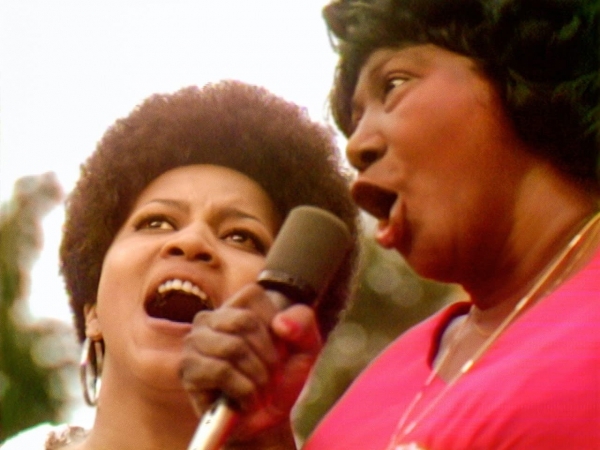PUTNEY — In the summer of 1969, 300,000 people gathered to hear the country's most iconic stars at a free music festival.
And I don't mean Woodstock, in a field in upstate New York.
I'm talking about the Harlem Cultural Festival, which organized six concerts in Mount Morris Park in Harlem. The lineup ran from legendary gospel singer Mahalia Jackson to a young Stevie Wonder, and it included the 5th Dimension, Sly and the Family Stone, the Staples Singers, and so many more.
A cameraman named Hal Tulchin was inspired to film the concerts, but after he couldn't sell the footage, he stored it in his basement, where it remained until just a few years ago, when Ahmir Thompson, known as Questlove, agreed to produce a film using the footage.
Summer of Soul (...or, When the Revolution Could Not Be Televised) went on to win 51 awards, including the Audience Award and the Grand Jury Prize at the Sundance Film Festival, as well as 48 award nominations.
* * *
The Cultural Festival offers a multidimensional contrast to Woodstock. Aside from the lineup of musicians, the most obvious difference is the audience: the festival took place in the heart of Harlem, and the audience was overwhelmingly Black, while most of the people who made the trek to Woodstock were white.
Another notable difference - most attendees at Woodstock were young adults reveling in sex, drugs, and rock 'n' roll, but the Harlem festival drew families from its neighborhood, including young children riding on their respective dads' shoulders and grandmothers in formal clothes.
Since tensions in Harlem were still high following the assassination of Martin Luther King Jr., New York City police were reluctant to be present at the concerts, so the Black Panthers stepped in to provide security.
The audiences were enthusiastic as they applauded and danced, but the concerts were uneventful - another contrast to the chaotic scene upstate in Woodstock - so much so that they barely registered in mainstream media.
Questlove told Terry Gross in an interview on NPR's Fresh Air that if even a few of the things that occurred at Woodstock had happened at the Harlem Festival, “you'd have heard about it.”
The festival was orderly - but joyful, celebratory, and full of pride, at a moment when Black pride was coming to the fore. Questlove commented that members of Sly and the Family Stone “looked like aliens,” with Sly Stone's generous afro, long sideburns, and heavy gold chain.
Nina Simone was explicit in appealing to Black pride: before performing To Be Young, Gifted and Black, she addressed the audience.
“Are you ready to listen to all the beautiful Black voices, the beautiful Black feelings, the beautiful Black waves moving in beautiful air?” she asked. “Are you ready, Black people? Are you ready?”
And during the concert, Mahalia Jackson (incidentally, the highest-paid performer) felt unsteady and passed her mic to young Mavis Staples - a moment of grace, as a music legend stepped back to lend her glory to the next generation's rising star.
* * *
While Woodstock shows a historical moment, caught at the time and preserved, Summer of Soul adds a layer of historical perspective.
The producers sought out some of the musicians and filmed them as they watched footage of themselves performing at the Festival. Marilyn McCoo, of the 5th Dimension, chokes up as she watches the band singing and reflects on their uneasy path as a Black group that was widely perceived as white.
Next Stage, in Putney, has scheduled a screening of Summer of Soul on Saturday, Feb. 12. In our moment in history when there is cultural pressure to erase or minimize Black history and Black achievement, this movie celebrates them, joyfully.
